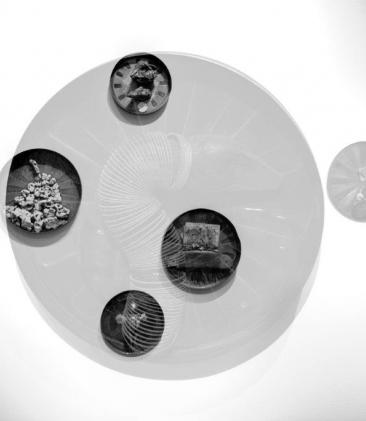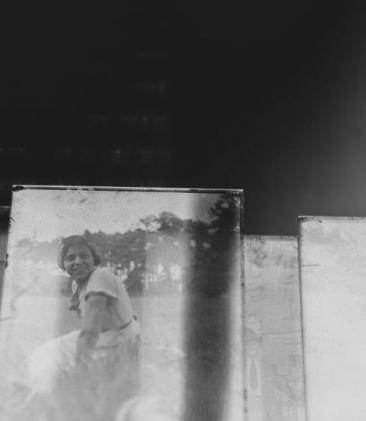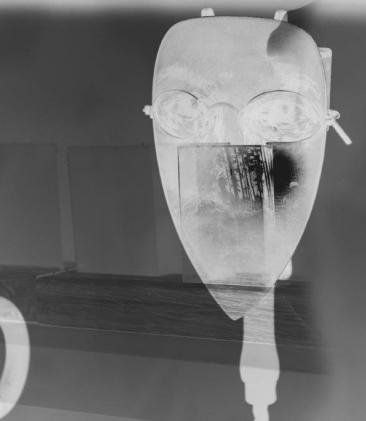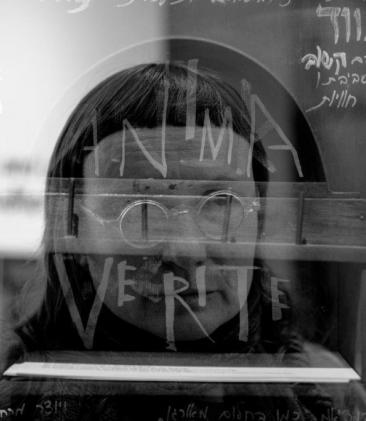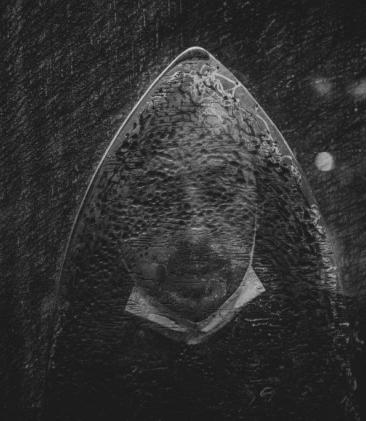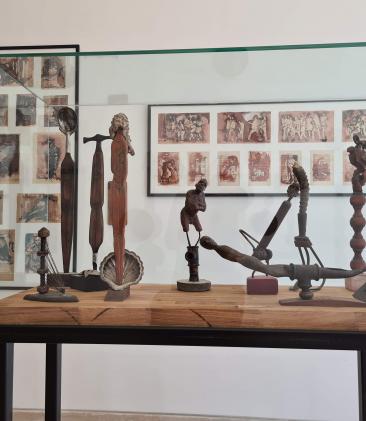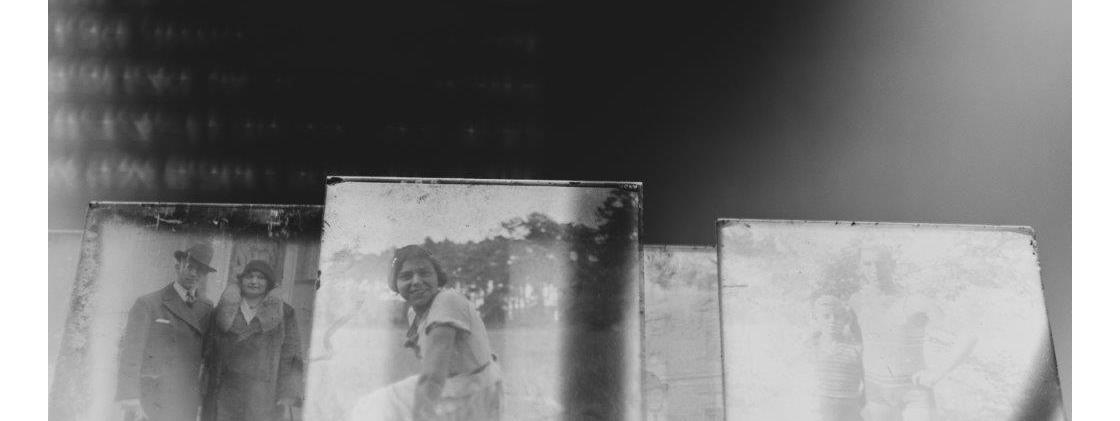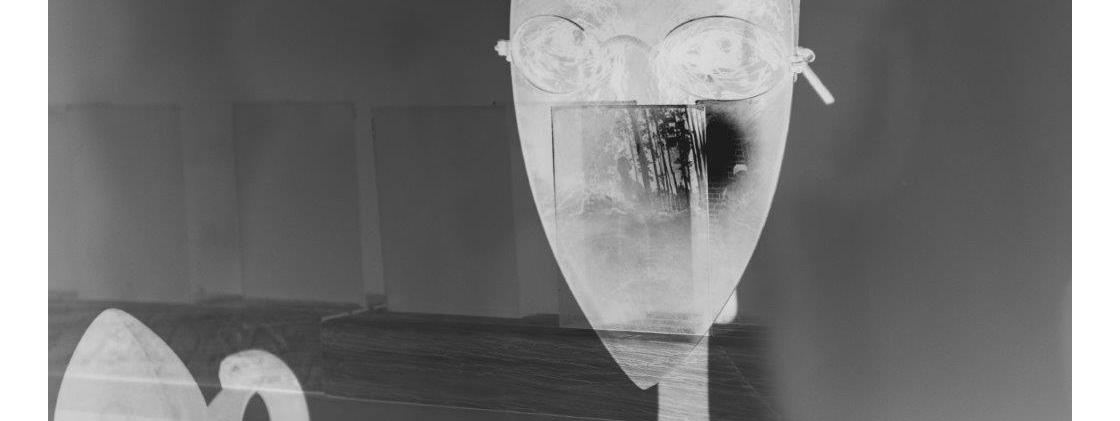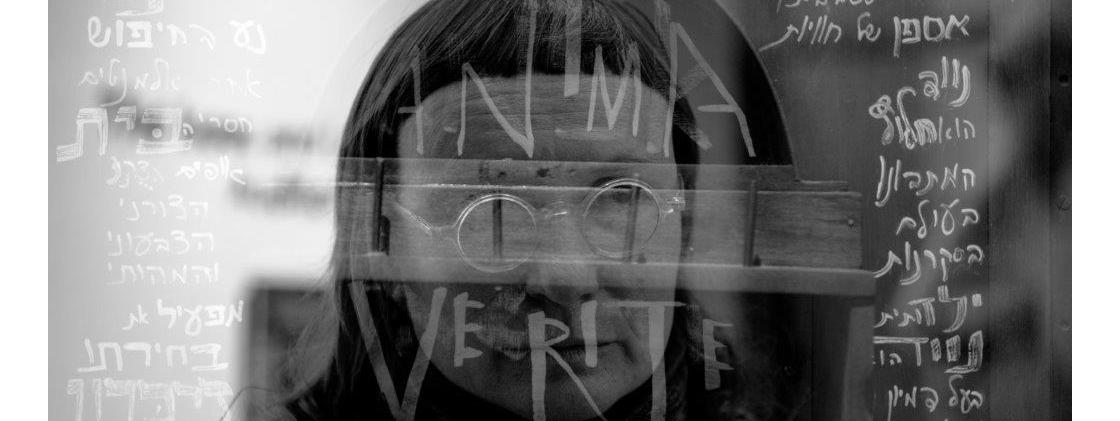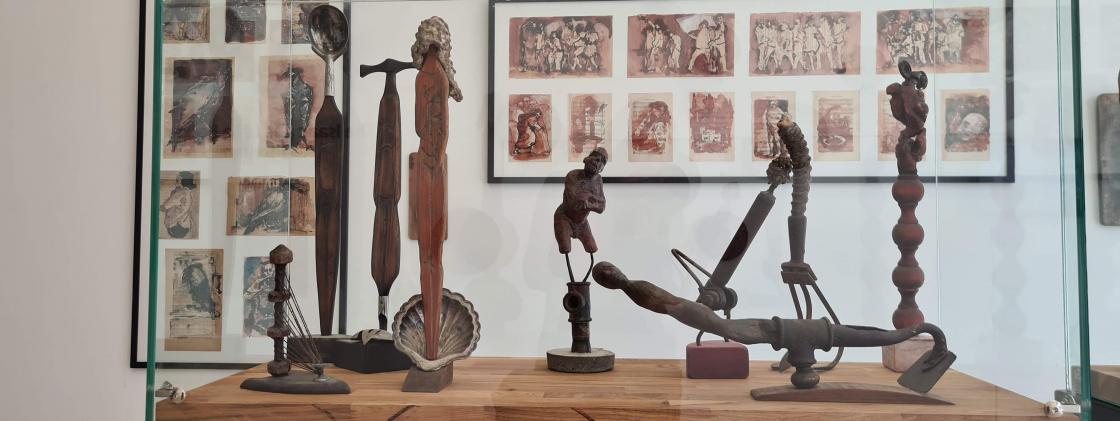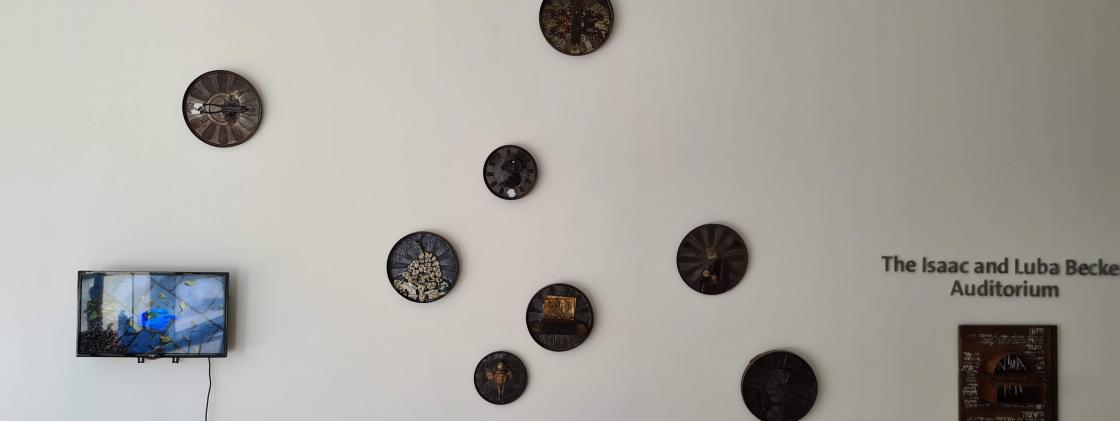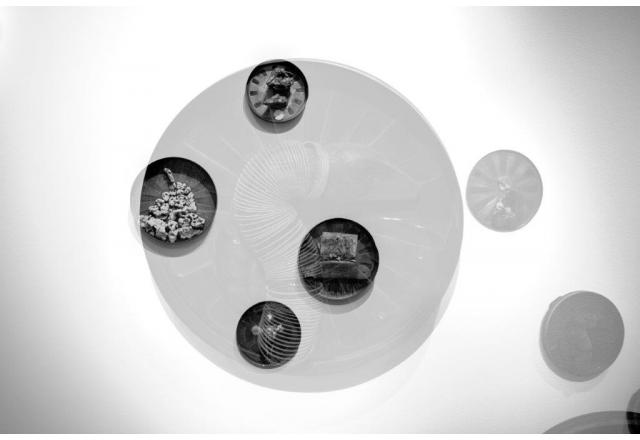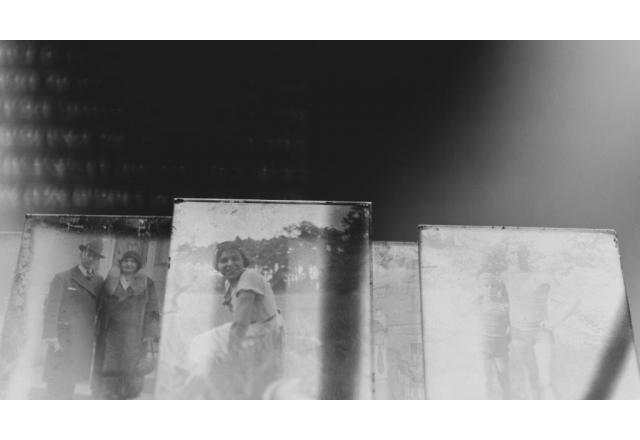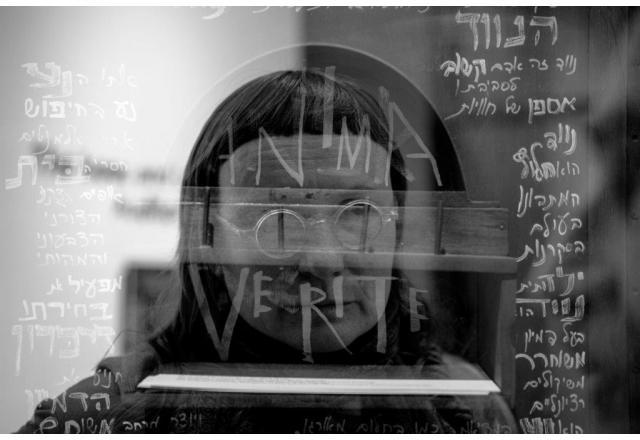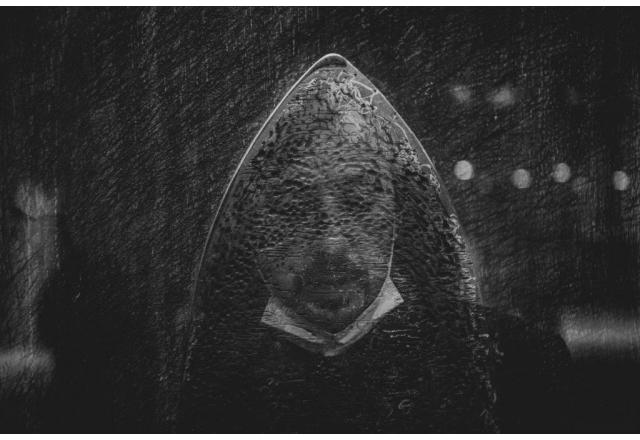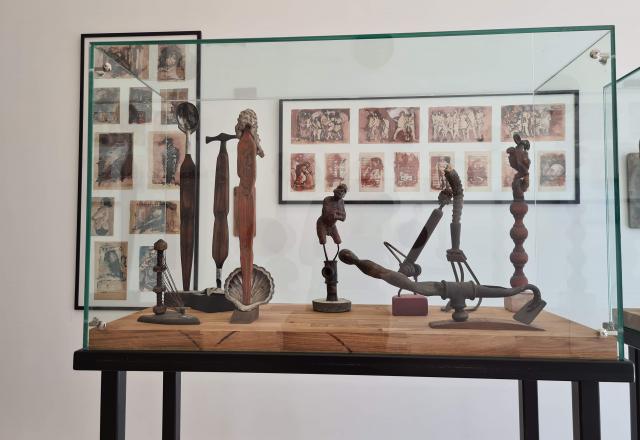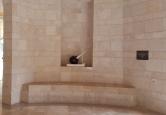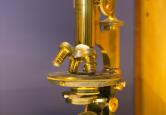Curation is the act of creating of new contexts for displaying cultural artifacts. Since the 1990s, interdisciplinary cooperation has given rise to multi-voiced interpretations by artist, curator, and scientist – pushing aside the concept of singular “genius.”
The beginning of this discourse can be found in the magical encounter between artists Max Epstein and Olga Goltser, examining objects collected during their wanderings, whether down an alley, along the coast, or in nature. Broken dishes, pieces of pottery or metal, anything and everything – testimonies to memories past that have become theirs through the act of re-creation. The exhibition is pungent with time, space, detachment, and ingathering, truly a cultural and linguistic hybrid. Combined with each new viewing, a new tale is spun.
This exhibition is a 'Rashomon' of sorts, interpreting the displayed objects in different ways; each version is logical, complete, and persuasive – and may contradict previous versions. The pieces of art comprise a collection of riddles, hints, and contradictions that operate on you – the viewer – virtuosically, raising questions about the explicit and implicit values on display. These converse about the relativity of truth, and its reliance on the eye of the beholder. “ It is not the hand that rewrites the material, it is the observing eye that tries to find readiness to present the object (Arlette Farge, The Allure of the Archives. 2013).
You are welcome to write your own text panels for this exhibition by filling this form.
Musings on art and brains
Impressions by Prof. Israel Nelken
Perception comes with a sense of immediacy, a direct and intimate relation with the external objects that are perceived. But this immediacy is an illusion. The brain receives information from the environment through a limited, noisy set of sensors – the eyes, ears, and all the rest. These senses report about the external world by partial, noisy measurements. Thus, we perceive the world through a veil. Perception can be construed as the attempt of the brain to reconstruct reality - the reality that gave rise to the sensory signals. This process is complex. Sensory processing, which is performed automatically and without awareness, engages huge territories of the mammalian brain, and takes substantial amount of time.
While brains are remarkably successful in this process, they are not infallible. Visual illusions are an example – we perceive things that are not there. Less known, but as compelling, are cases of bistable perception – situations in which the ambiguity of the sensory input results in perception flipping between two very different percepts. For example, in the artificial situation in which two different images are presented to the two eyes, we perceive either one of the images or the other, but not a mix of the two.
The art presented here challenges perception as well. The daily objects that are placed together in unusual combinations, the multiple layers of color and print on paper, the organization of the whole in space – each of these engages the interpretative mechanisms that are so important for perception. The incongruity of these compositions results in multiple possible interpretations that, as in bistable perception, hover around while pushing each other in and out of awareness.
AUGURIES OF INNOCENCE from Olga Goltser on Vimeo.




